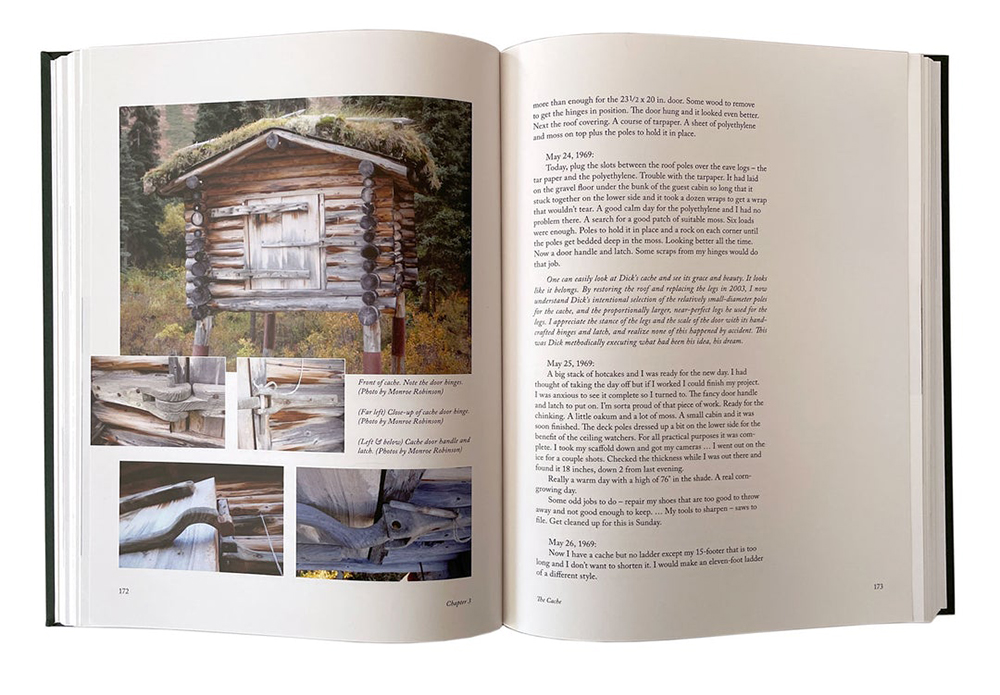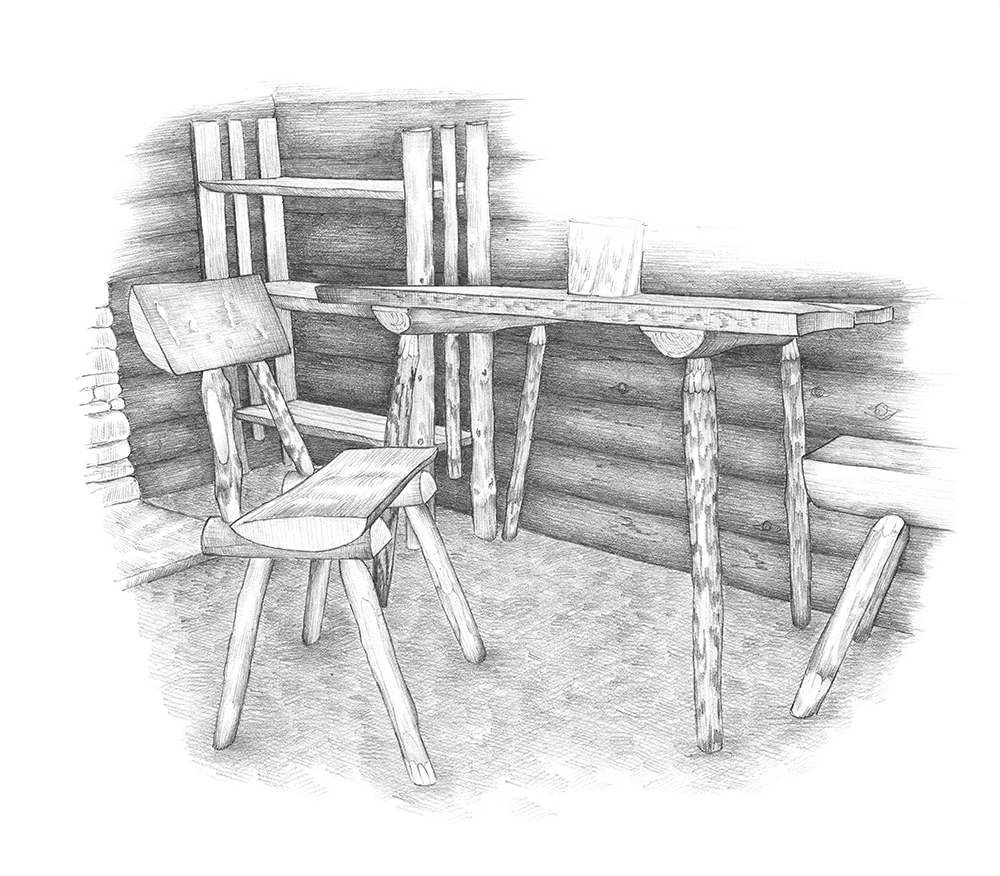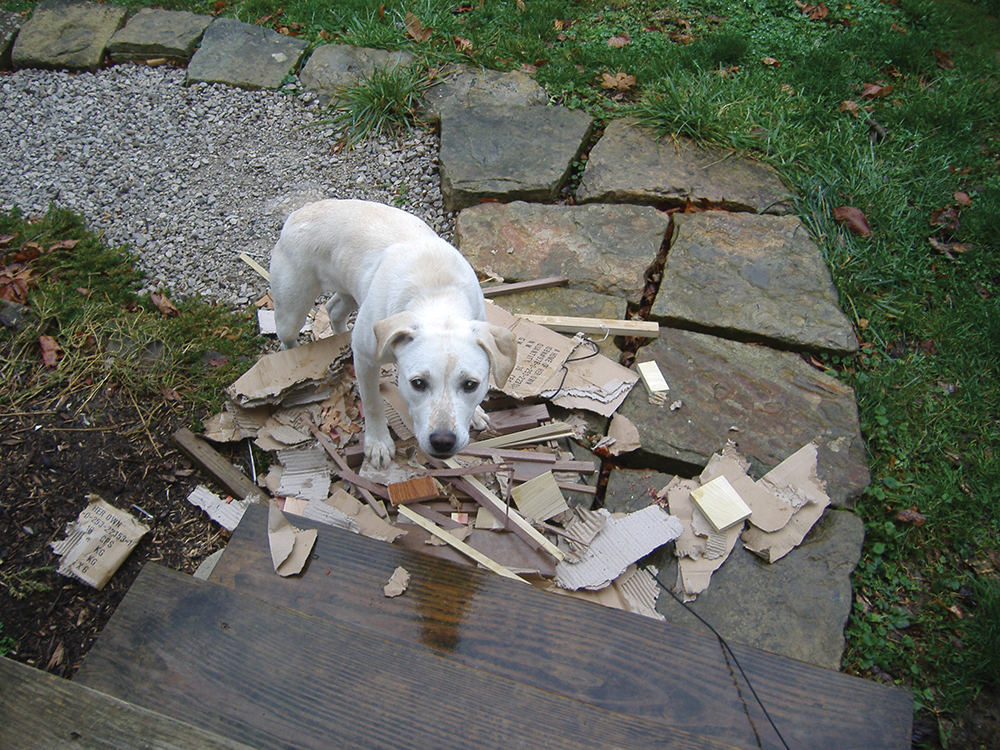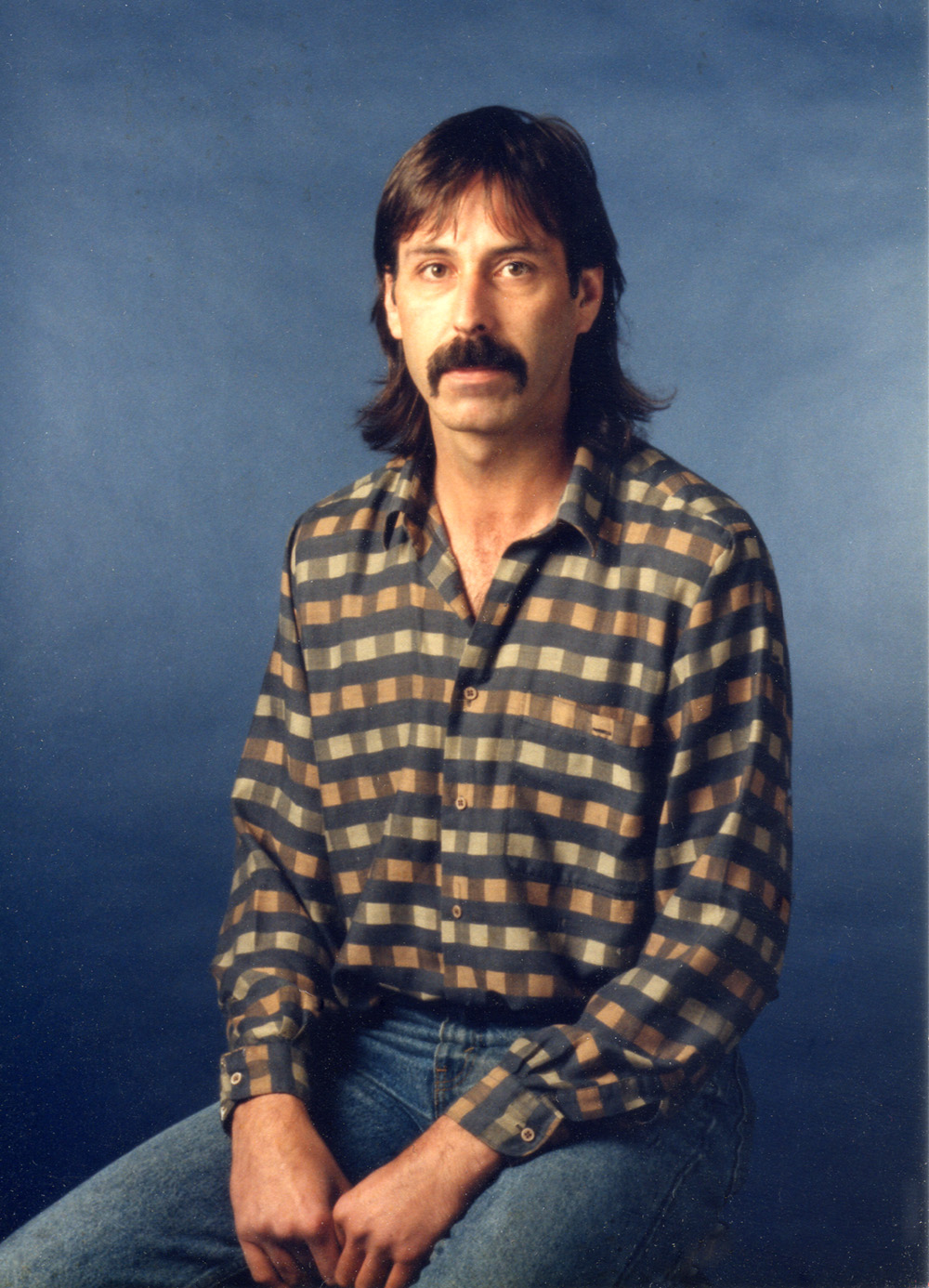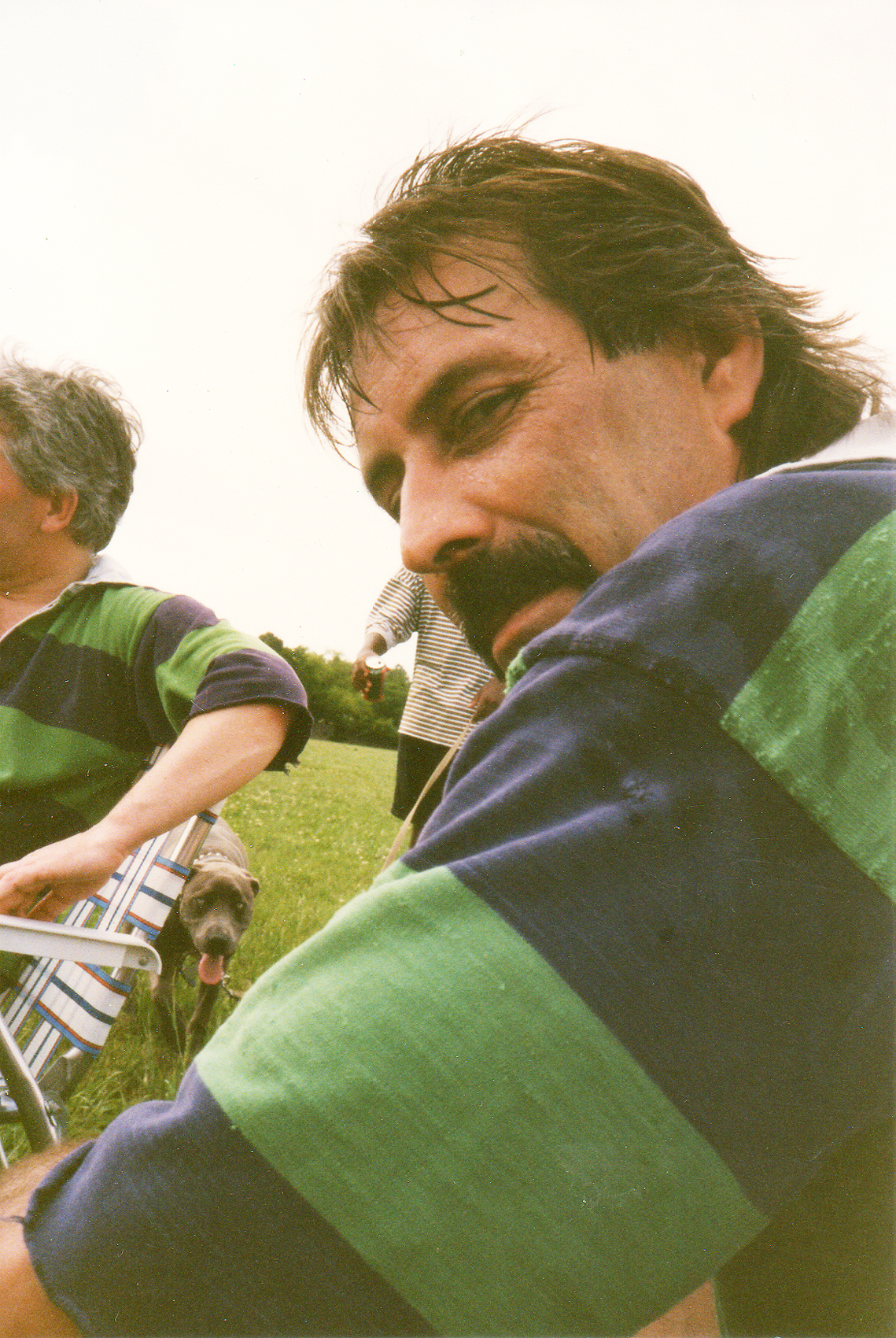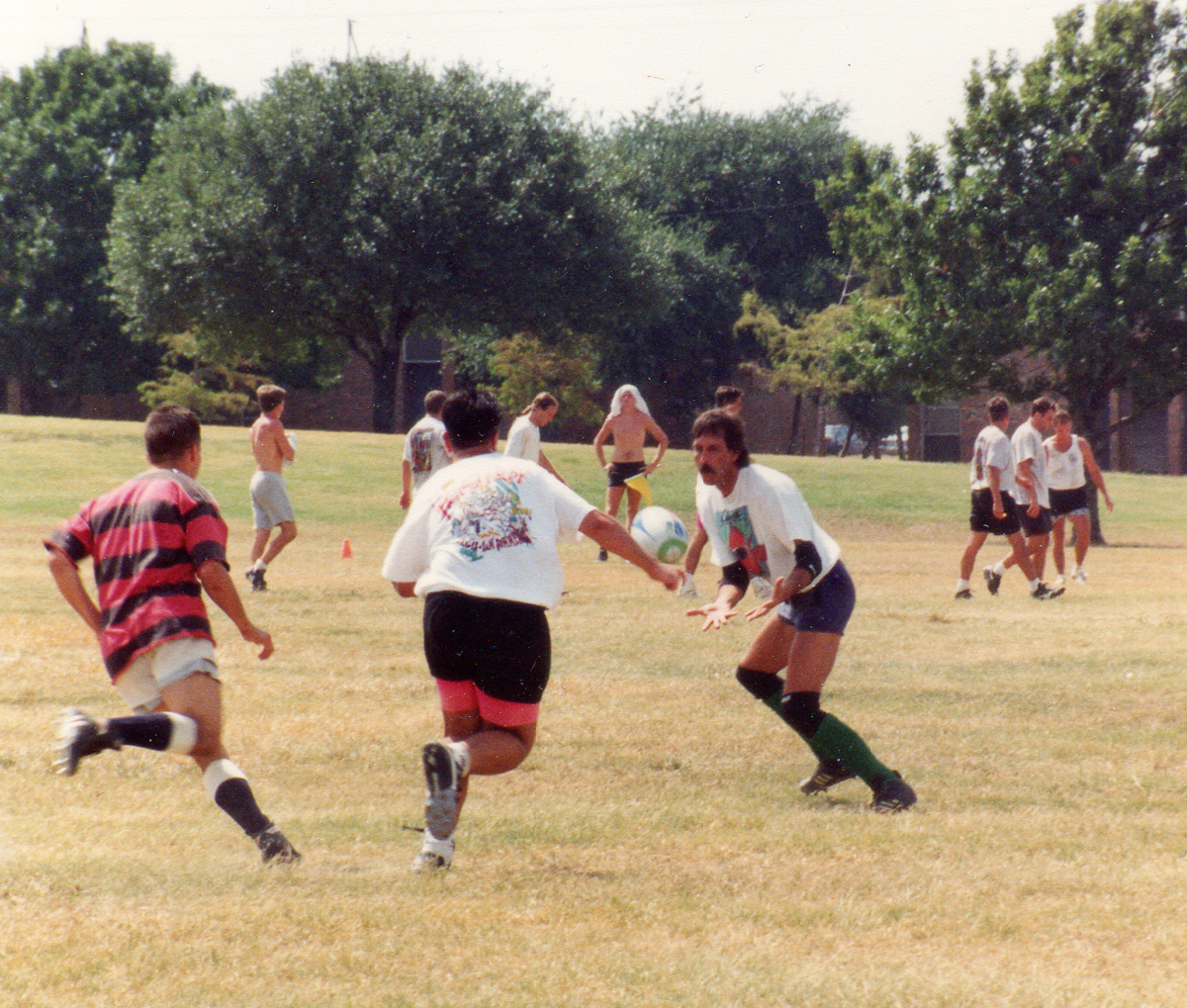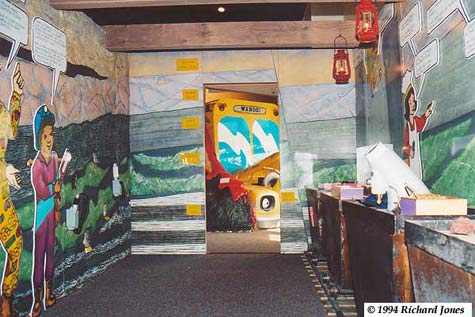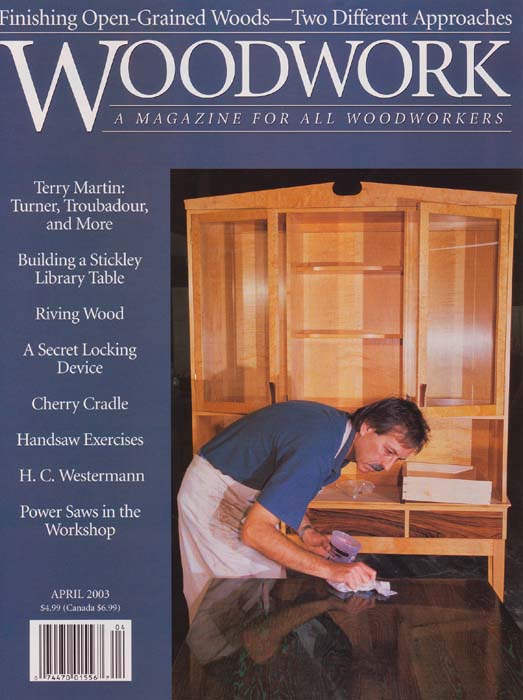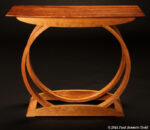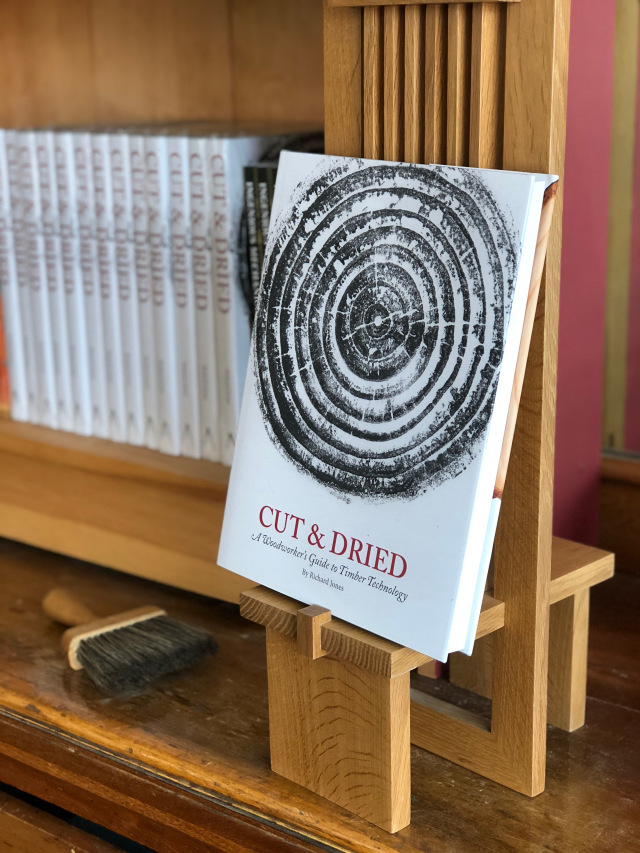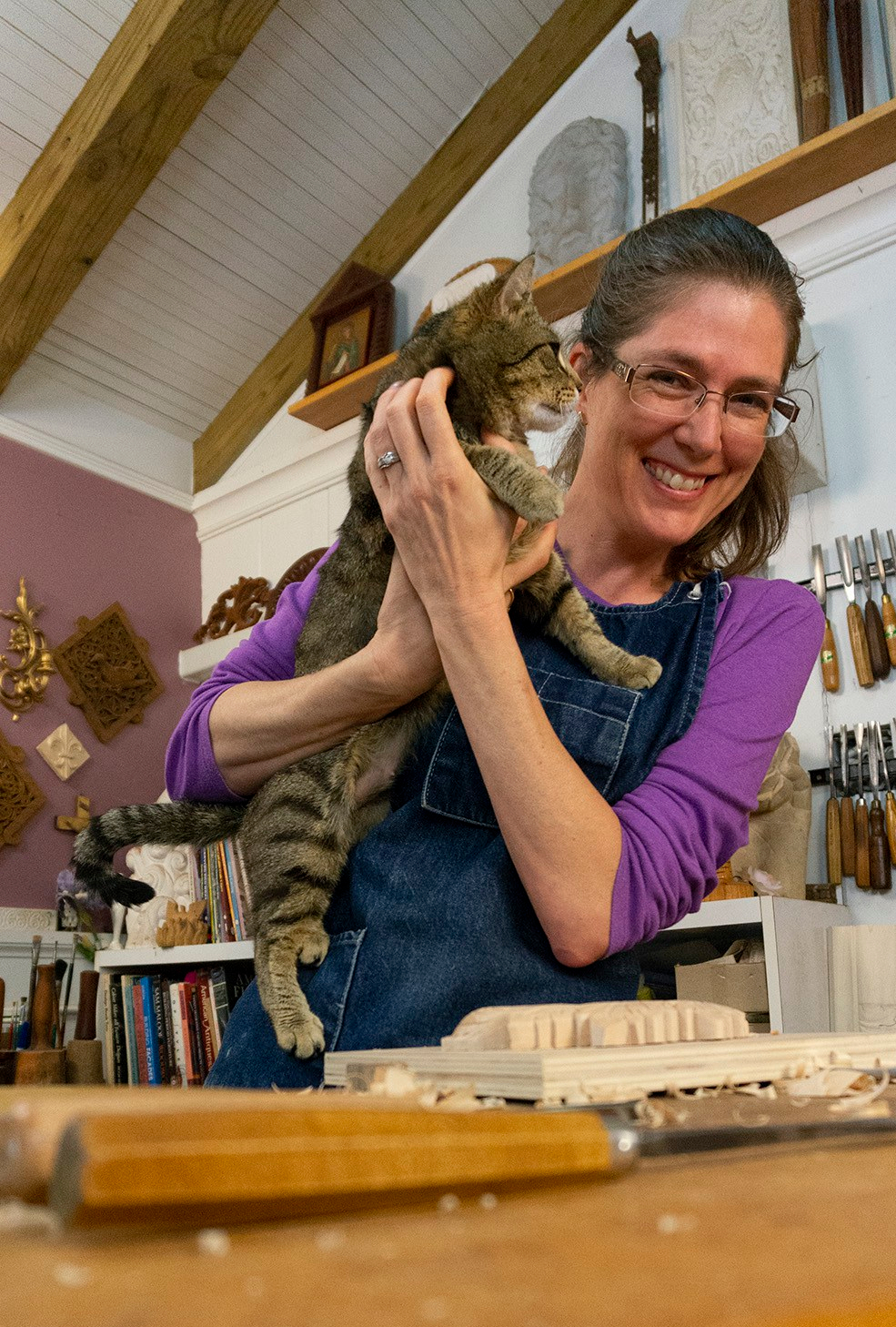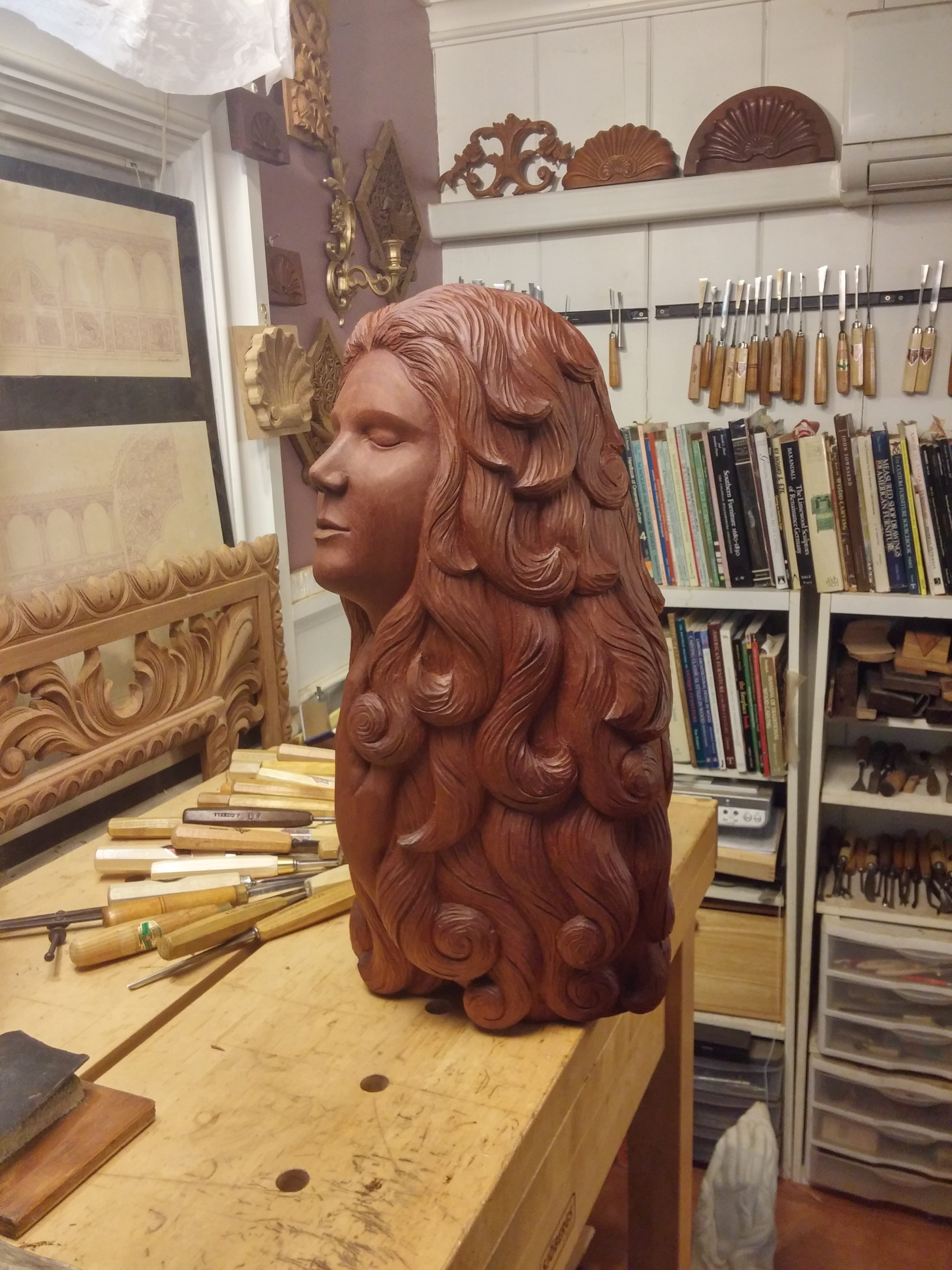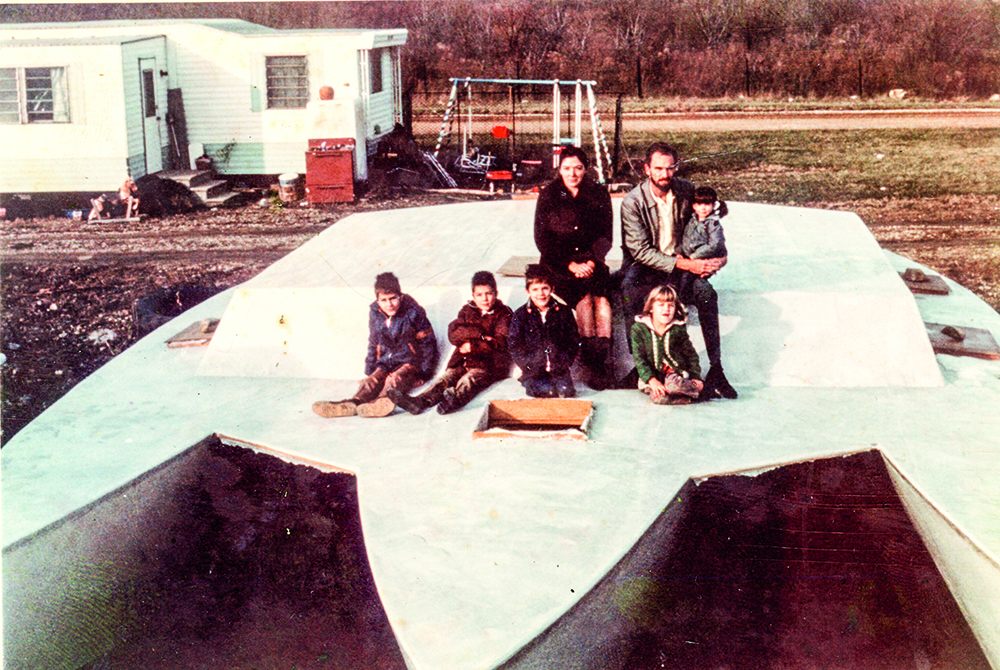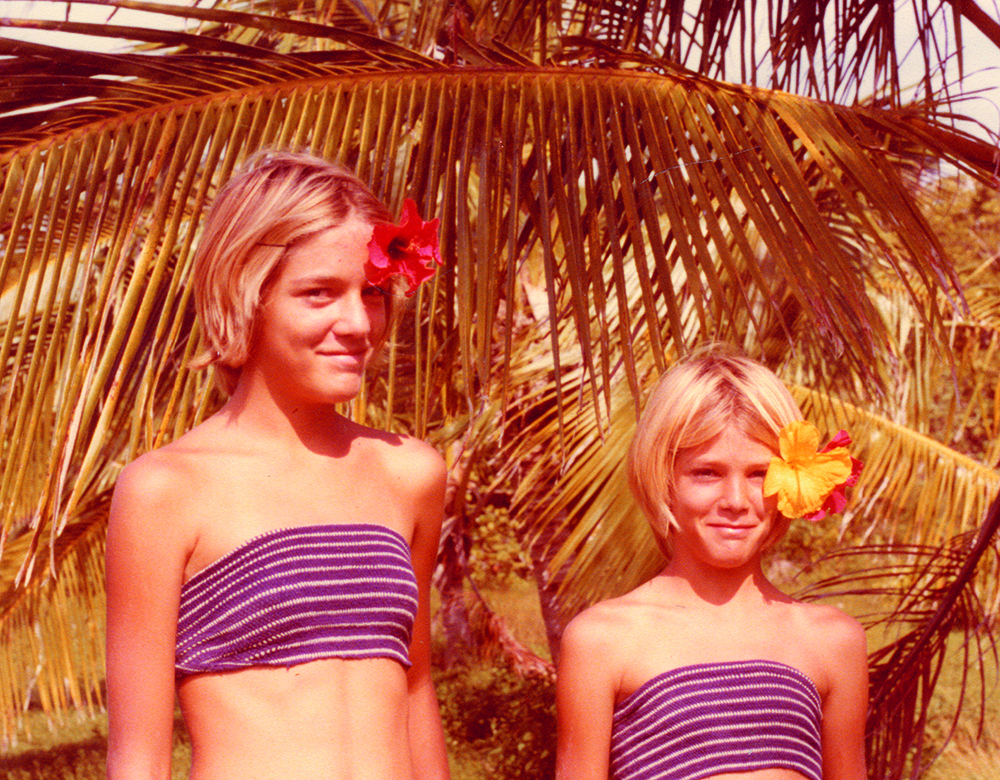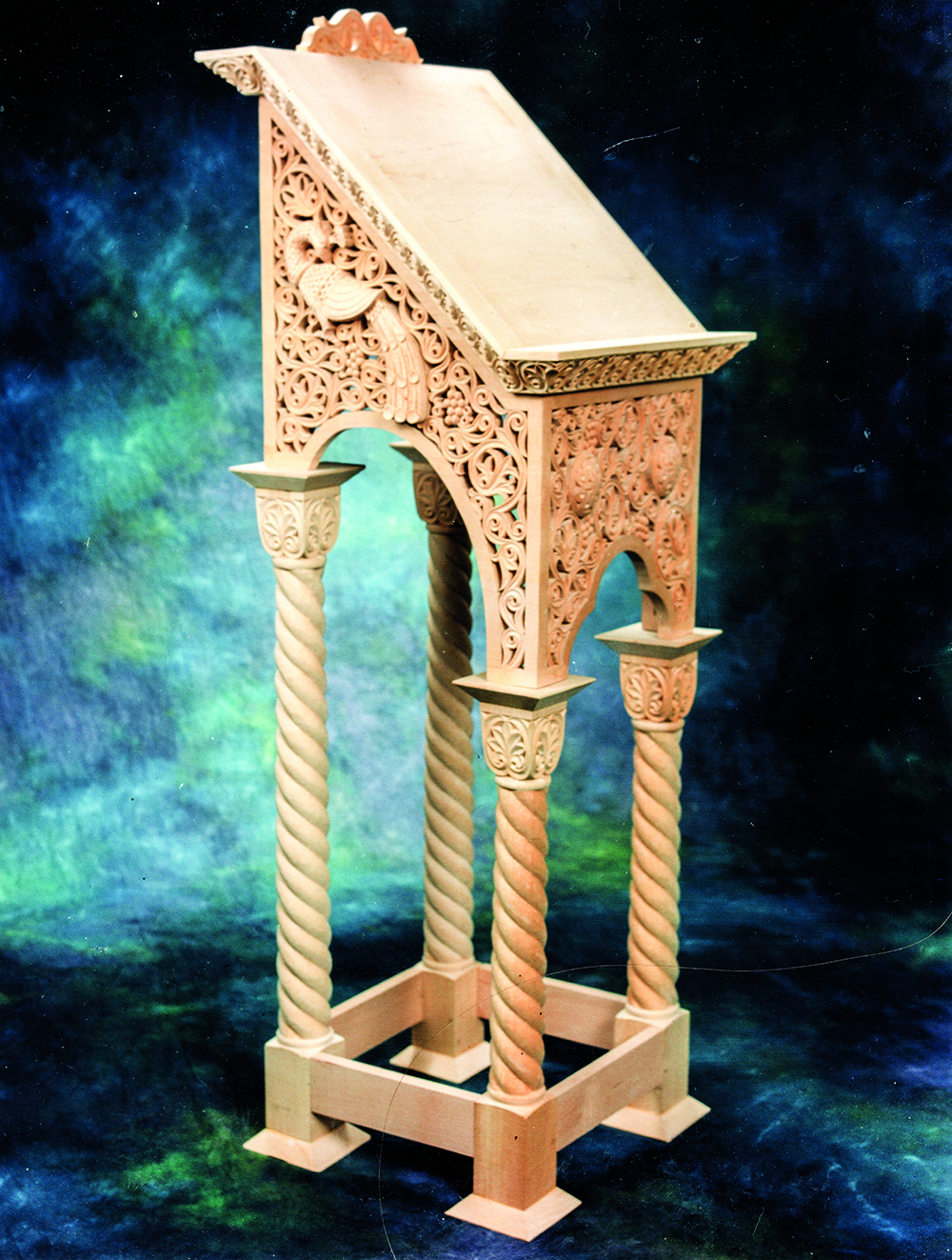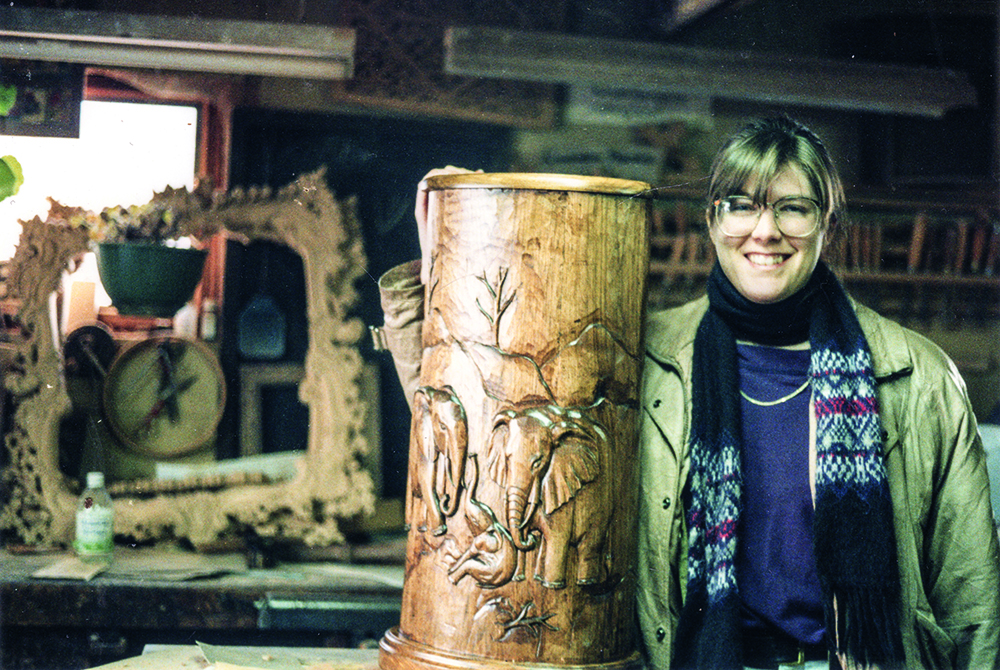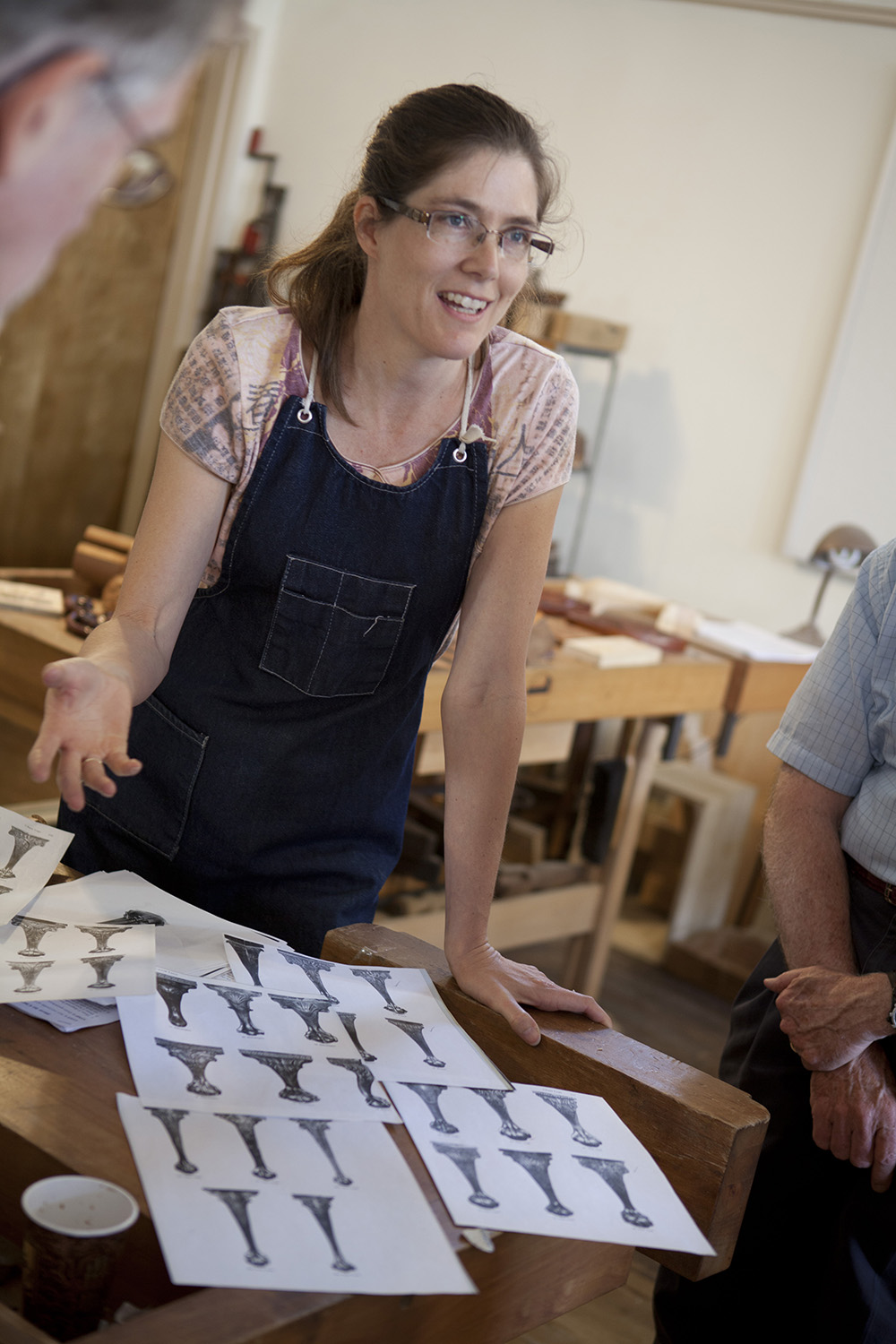
Chris Williams grew up in a typical, conservative Welsh family (his words). His mother was a homemaker; his father, a tax inspector. He has one sister.
Although his parents weren’t craftspeople, Chris’s lineage includes shoemakers, cabinetmakers and joiners. Thomas Jenkins, born 1813 and a distant great-grandfather to Chris, is famous, locally. Jenkins kept a daily diary, which has been published as a book: “Selections from the Diary of Thomas Jenkins (1826-1870),” edited by D.C. Jenkins (Dragon Books, Bala, North Wales, 1986; republished by Historia Wales, 2012).
Jenkins was curious and loved to learn – in 1843 he founded the Llandeilo Mechanics’ Mutual Instructing Institution, which met at his house. He built boats, a bridge, violins (which he learned how to play) and more than 250 coffins. He collected fossils, explored caves and conducted science experiments. A lover of astronomy, Chris says Jenkins found work installing sundials in the yards of the big country homes that dotted the landscape. According to the editor’s introduction in the book, Jenkins also erected public lighting, brought gas and water to his town, was involved in mining, beer brewing and census enumerating, fathered 12 children and was named a constable of the Lee Court. He walked everywhere, and later in life built “a homomotive carriage with three wheels.”
“He was an amazing man,” Chris says.

Chris enjoyed a childhood spent playing in the countryside with friends, climbing trees and building dens.
“I didn’t like school, particularly,” Chris says. “I wasn’t an academic, for sure. I enjoyed woodwork, metalwork, technical drawing.”
Chris spent as much time as he could in the school’s woodshop. It was the mid-1980s, and he says the woodshop had an old-fashioned feel to it, starkly different from the clinical and sterile white cabinets and Formica worktops of the school workshops he sees today.
“Our woodshop was a proper workshop, with bloody wooden benches and tools and timber,” he says. “It was what I think a proper workshop should look like.”
His school’s career officer, having noted the amount of time Chris spent in the school’s woodshop, recommended a carpentry/joinery apprenticeship.
“I went home and told my parents and they said, ‘Yeah, fine,’” Chris says. “My parents had no aspirations for me at all. It’s different, the way I bring my kids up. We’re really keen on their education. Not overly pushy, but we’re very aware of it. If they’re behind and not doing it, we try to explain why they need to do it. I didn’t really have any of that. They were good parents, but I think it probably would have helped me if they had possibly encouraged me a bit more academically.”
Chris’s apprenticeship was with the local council, maintaining council offices, farms and schools – anything council-owned. Most of the buildings were big, old, beautiful Georgian properties, which Chris enjoyed.
Chris’s foreman was in his late 50s. “He was really good,” Chris says. “He was extremely knowledgeable.” Chris surmised his foreman did his apprenticeship shortly after WWII. The area, then, was quite rural. “His apprenticeship would have been really quite primitive,” Chris says. “Very few machines. They had a wheelwright’s shop and there was an undertaker’s shop there as well. So it harkened back to a really old Wales.”
It took awhile for Chris and his foreman to come to terms with each other. “I don’t think he really liked me at first, but we seemed to hit it off later,” Chris says. “I wasn’t cocky, but I liked to laugh and joke, and he was more serious.”
Chris earned his City & Guilds qualification and began working at a young age self-employed. “It was ridiculous to start at that age,” he says. “My parents separated, and it was a funny time for me. I can’t say I was lost, but I didn’t quite know where I was going, really.”
Chris can point to two things that jumpstarted his furniture making. First, his fondness for “simple country furniture” began with a book he found in his technical school’s library – “Furniture Making Plain and Simple” by Aldren A. Watson. He was 16. And then, at around 19, after earning his qualifications, he befriended a carpenter, who always made his own furniture. “He’s a really clever guy,” Chris says. “He’s a lot older than me and he lived near me. And I’d always call on him and see what he was making.”
Chris’s first piece was a settle – a bench with arms and a seat that opened up. “It was the first thing I ever made for myself on my own,” he says. “I just went for it.”
Nobody taught him – but he realized furniture making, carpentry and joinery all carried similar principles. “If you’re interested, you just soak it all up,” he says. “That’s what I believe. I’m genuinely one of these people that if I really wanted to learn how to do something, I’ll put everything into it.”
A Kitchen Workshop
Chris was young, and living with his mother. The only machine he owned was a lathe, which he kept in a small outbuilding in the garden. His mother would often come home from work only to find Chris building 10’-long oak gates on the kitchen table. He was also interested in blacksmithing – he would heat things using the fire inside and then walk the fiery item, with tongs, through the living room to then work on it outside.
“I realized there was a chance of burning the house down so I thought I better not carry on with that,” he says.
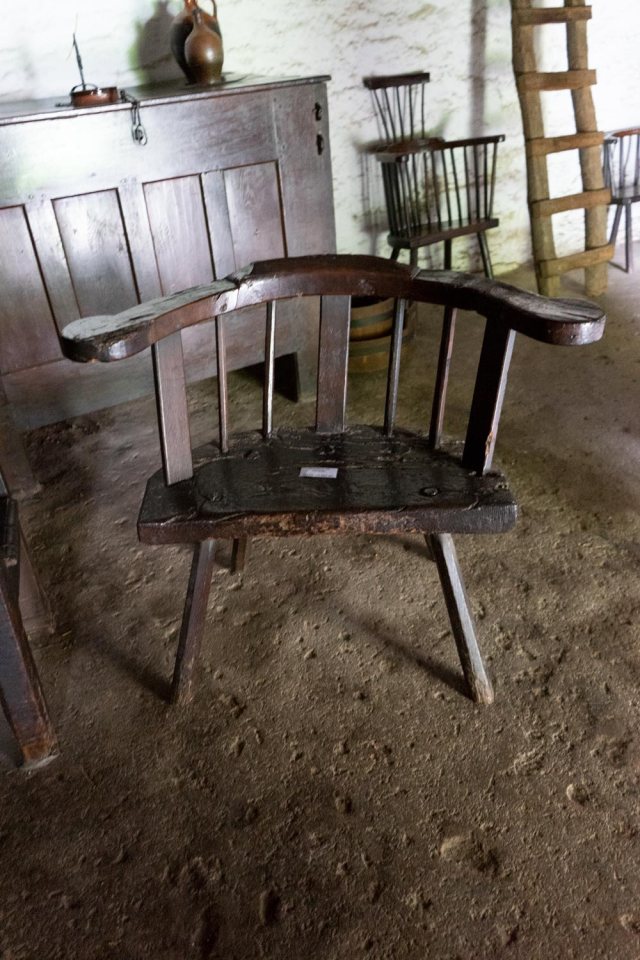
By this time Chris had heard about “a mythical chairmaker … [who] made chairs by hand without the aid of electricity and lived in his workshop.” (You can read more about that meeting here.) Chris was also visiting St Fagans National Museum of History regularly, and while he noticed the chairs there, he didn’t pay close attention.
“At that point I didn’t really know what I was looking at,” he says. “And lots of people didn’t really know, either. John coined the phrase ‘Welsh stick chairs.’ People will dispute that, but he did.”
With some research, Chris discovered this mythical chairmaker had written a book – “Welsh Stick Chairs.” He drove to Newport, Pembrokeshire, to buy a copy. John Brown, who was dropping off more books to sell, held the door open for him. Chris had no idea.
Chris says the book was a “revelation,” and at age 21 he made his first chair, in his mother’s kitchen, on a Black & Decker workmate.
“It’s terrible,” he says. He still owns it.
Chris accepted work as he could find it. He sold his first settle, and then another. He continued making simple furniture – anything he could fit in his mother’s kitchen.
A couple years later he began renting space in an old farm building. Aside from the lathe, he had no machines – he couldn’t afford them. If he needed something planed, he would go to his friend’s joinery shop and use the machines there. He worked like this for a couple years.
And then Chris’s partner, Claire, wanted to travel. Her contract job as a research scientist ended. So she came home and said to Chris, “I’m going traveling.” Chris decided to go with her.
The flight, an open-ended, around-the-world-type ticket, was expensive. “I never earned a lot of money,” Chris says. “I generally mean that. You’d be shocked if you realized how little I earned.”
So, Chris made three chairs. Then he put them in his van and drove them around to people he knew, friends and past clients, to see if they were interested in buying one.
“Within a week I had sold the three chairs, and I had the money for the ticket,” he says. “I was really pleased that people had faith in me to buy these chairs. I wasn’t really known for making them at that point.”
Chris and Claire travelled extensively – to Australia, New Zealand and the Cook Islands. While in Melbourne, Chris picked up a copy of the November/December 1997 issue of Fine Woodworking – in it was an article about John Brown. The article included a picture of John Brown’s workshop, with daffodils coming out of the hedgerows. (The daffodil is the national symbol of Wales. On St. David’s Day, everyone wears a daffodil on their lapel.)
“I thought, I just want to go home,” Chris says.
Meeting John Brown
Chris doesn’t buy woodworking magazines. Or books. “I find them quite unsettling because I’m not the most confident person,” he says. “When I read other ways of doing things I always wonder, ‘Am I doing it right?’”
But he did buy all the copies of Good Woodworking that featured John Brown as a columnist.
Once back in Wales, Chris and Claire bought a house. Determined to meet John Brown, Chris pulled out a phone book. While all the names listed included a last name and first initial, John Brown’s name was different – it was listed in full: John Brown.
“I just rung him up,” Chris says. “And he answered the phone, and I was kind of really nervous and he answered the phone and he went JOHN BROWN, like that. And I kind of had a mild panic attack, and I started mumbling because it’s weird talking to somebody who you’ve put up on this huge pedestal, isn’t it, really?”
Chris explained who he was – he said he had made some chairs and wanted to be a chairmaker. He asked John Brown if he could visit. John Brown said yes.
“I drove down, and I eventually found him and I knocked at the door,” Chris says. “Where he lived was very remote, very difficult to find. Typical John.”
John Brown was a bit gruff when he opened the door, but Chris soon realized it was because he was in the middle of gluing up a chair.
Chris watched him, while also taking in the space – rustic (a word John Brown would hate, Chris says, but one that properly defined the space) and simple, with hand tools, art, quotes from the likes of John Ruskin and poetry – some of which was carved into the walls.
“It was just totally different,” Chris says. “A totally different way of life.”
After the glue-up was complete, John Brown made a pot of tea. The two drank tea and talked. And then John Brown made another pot of tea.
“Obviously we got along,” Chris says.
Throughout it all, though, Chris was feeling self-conscious.
“I had a baseball hat on as a result of a few too many drinks one night,” Chris says. “I was staying with friends in Auckland, and they decided it would be funny if I peroxide blond-ed my hair.” He laughs. “I was rip drunk. And I said, ‘Yeah! Whatever!’ It went wrong and I looked like a carrot. So they had to do it again and I can remember my scalp burning. So I had this bizarre look – dark eyebrows and a kind of yellow hair. It was ridiculous. So I had a hat on and I could see him looking at my hat, thinking, ‘When is he going to take it off?’”
Weeks later, Chris told John Brown the story. John Brown laughed.
A 10-year Partnership
Chris first contacted Lost Art Press out of anger and loyalty to John Brown.
“I felt that people were missing the point sometimes about John Brown and there was a lot of misinformation,” he says.
Chris S. had recently pulled his public email address, so Chris W. had to be creative in reaching him. But the two connected, and a partnership – and friendship – formed.
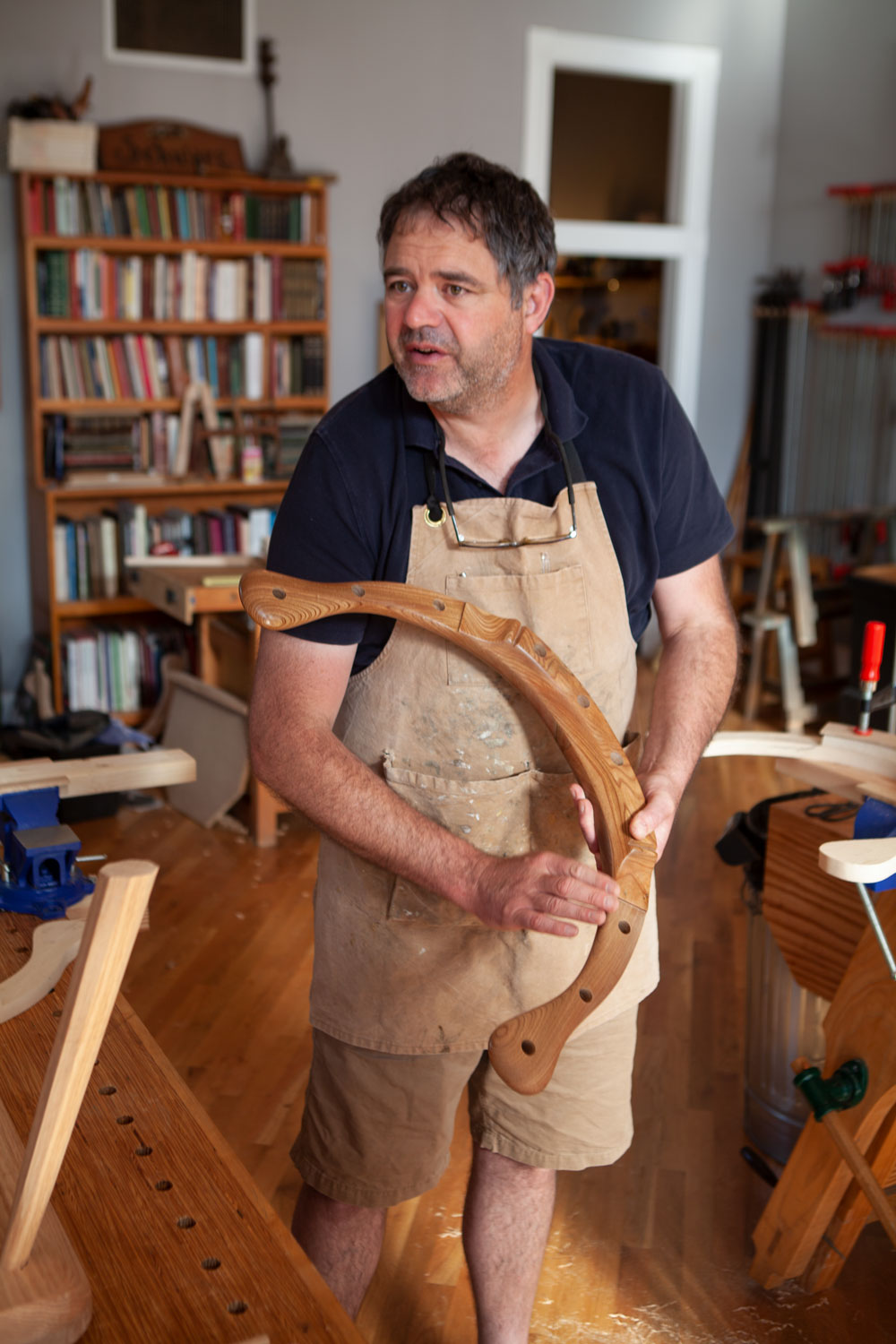
Fast forward to May of this year, in the Lost Art Press library. Chris W. had just finished his first week-long chairmaking class. Several students were finishing up and Chris would stop, periodically, to offer warm goodbyes. He sat in Chris S.’s dugout chair and told the story of his life in a booming, but not overbearing, voice, complemented with heavy laughter. When he quoted John Brown his voice dropped low, each syllable weighted heavily, bringing life to the mythical chairmaker from Wales.
Chris W. spent the next hour in this chair talking about his relationship with John Brown. But this is a profile about Chris, not about John Brown. And those aren’t my stories to tell. Those are Chris’s stories, and they are the backbone of a book that has been years in the making.
Some teasers: a meeting at Axminster; a move to Llandovery; Vaughn Williams’s “The Lark Ascending”; tea; a test; a partnership; a friendship; a gallery; a trip to Exempla in Munich; an intense argument (involving, of all things, a restaurant bill and flatulence); an apology; a life change; a move to Carmarthen.
When John Brown retired from chairmaking, to study art, he gave Chris all his chair templates and offcuts. Chris bought some of his tools and helped him move to an apartment, an old Georgian with a big box sash window overlooking the Tywi Valley.
Chris went back to his old rented space at the farm and continued making chairs. A few years later the farmer, who had become a dear friend, died.
“I had to move out,” Chris says. “I wanted to because I couldn’t bear being there without him. He was the loveliest guy.”
Chris began working out of his home’s garage, but found there were too many distractions. The recession hit, and Chris’s chairmaking customers dwindled. He threw himself into general woodwork, but then his arms, overworked, failed him – tennis elbow in one, golfer’s elbow in the other, and recurring tendonitis in both forearms.
“My hands were bright red and blue,” he says. “I could barely hold a cup of tea it was so painful.”
John Brown died in 2008.
A Surprise Twist: Furniture Conservation
Chris visited a local furniture restorer, Hugh Haley, owner of Phoenix Conservation. Hugh knew Chris was a bit in limbo in terms of work, health and a shop, so Hugh asked Chris if he wanted to move his shop to Phoenix, where he could make chairs. “And if you like what I do, you can perhaps help me a bit,” Hugh told Chris. “Brilliant,” said Chris.
Within two months Hugh was diagnosed with cancer. Chris immediately offered to help.
“It’s woodworking, but it’s different,” Chris says about furniture restoration. Hugh had a lot of work coming in that he could not handle. So Chris began doing the work for him. Hugh lived behind his workshop, and whenever Chris had trouble he’d either take the item or a picture back to Hugh, who would then explain to Chris what he needed to do. In time and after two surgeries, Hugh recuperated. And today, while Chris still builds chairs, he continues to restore furniture for Hugh.
“I’m so grateful because it’s another new world, another new skill I’ve learned,” he says. Much of the work they do is for museums and historic houses. “So we get to work in some of the most amazing houses,” Chris says. “It’s incredible.”

Chris makes about a dozen chairs a year. “I don’t actively want lots of chair orders,” he says. “I like making them, but I’ve got to be in the right mood or want to make one. When I’ve done weeks of fiddling with old wood and it’s messy and this and that, it’s quite nice to work with new, fresh timber.”
Chris and Hugh keep a large stash of old furniture parts for the wood, mahogany and pine from the 1700s. That way, if Chris needs to make, say, a new drawer side for an antique piece of furniture, he can use the same type of wood from the same period in which it was made.
“You can see where the guy before me has cut dovetails,” he says. “I hate cutting them in a way but you’ve got to recycle the wood because it’s the same wood, it’s the same color, it’s the same era. … I love looking at them and taking them apart. It’s interesting. It’s really nice, you feel very – not attached – but when you’re repairing furniture, you’re seeing everything. You’re seeing the faults, you’re seeing why that has fallen apart and that’s quite good in making new furniture. You think, ‘Well, don’t do it like that because that’s why it’s failed.’ … And it’s wonderful when you come across a maker’s mark on a drawer bottom where somebody has written in pencil who they are and what year. That’s lovely when you see that. It’s really nice. I like that kind of thing, to know where it’s come from.”
Forging a Future of His Own
Chris and Claire have four children, ages 15, 13, 11 and 7. “I’m not an expert on being a father,” he says. “It’s hard. You’ve got five people living with you, with five different opinions.”
The children are involved in sports – football, rugby and swimming. Once Chris is home from work, he and Claire split the tasks, shuttling the kids back and forth from school and activities, taking turns cooking, loading the dishwasher and switching out laundry. It’s wearing but Chris says, worth it.
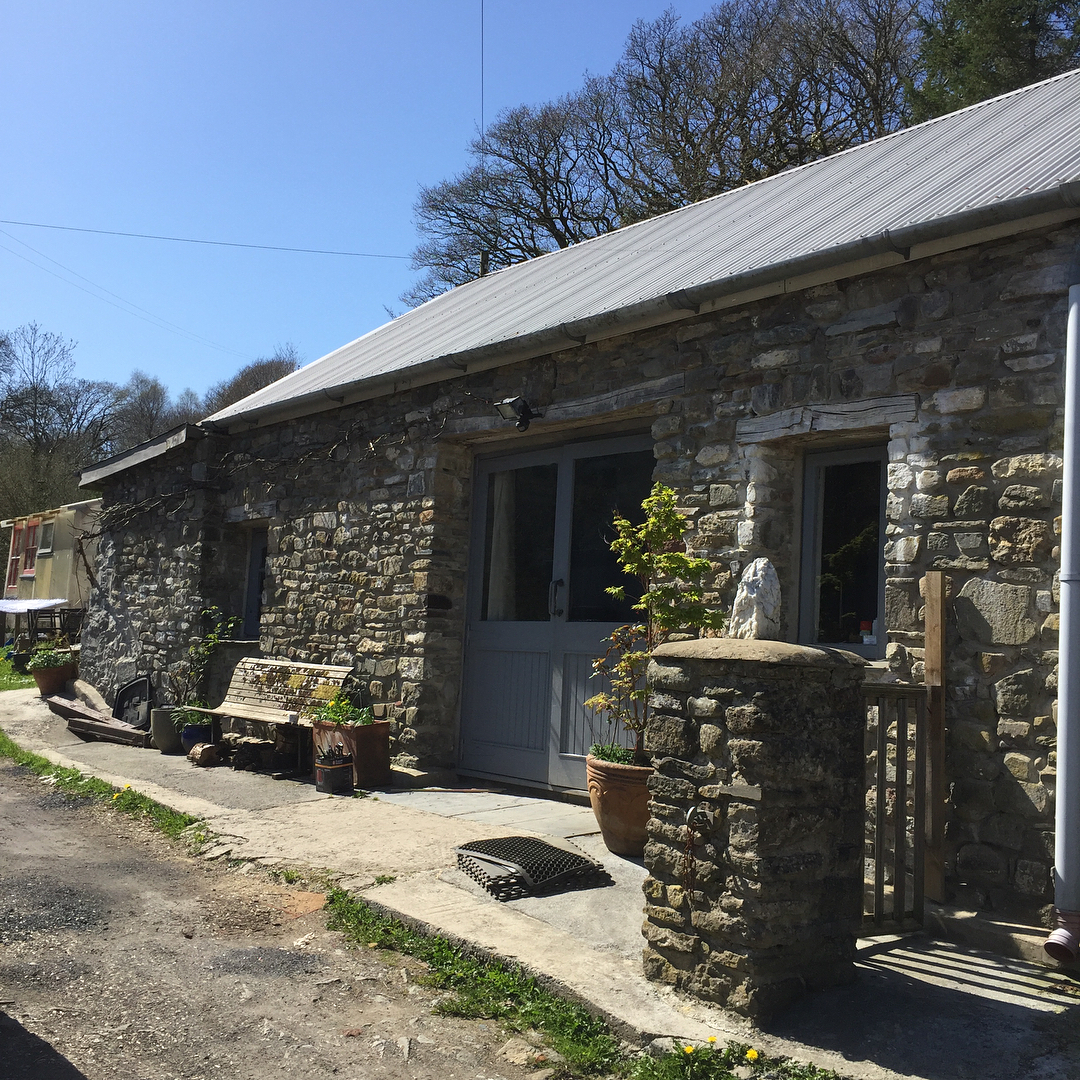
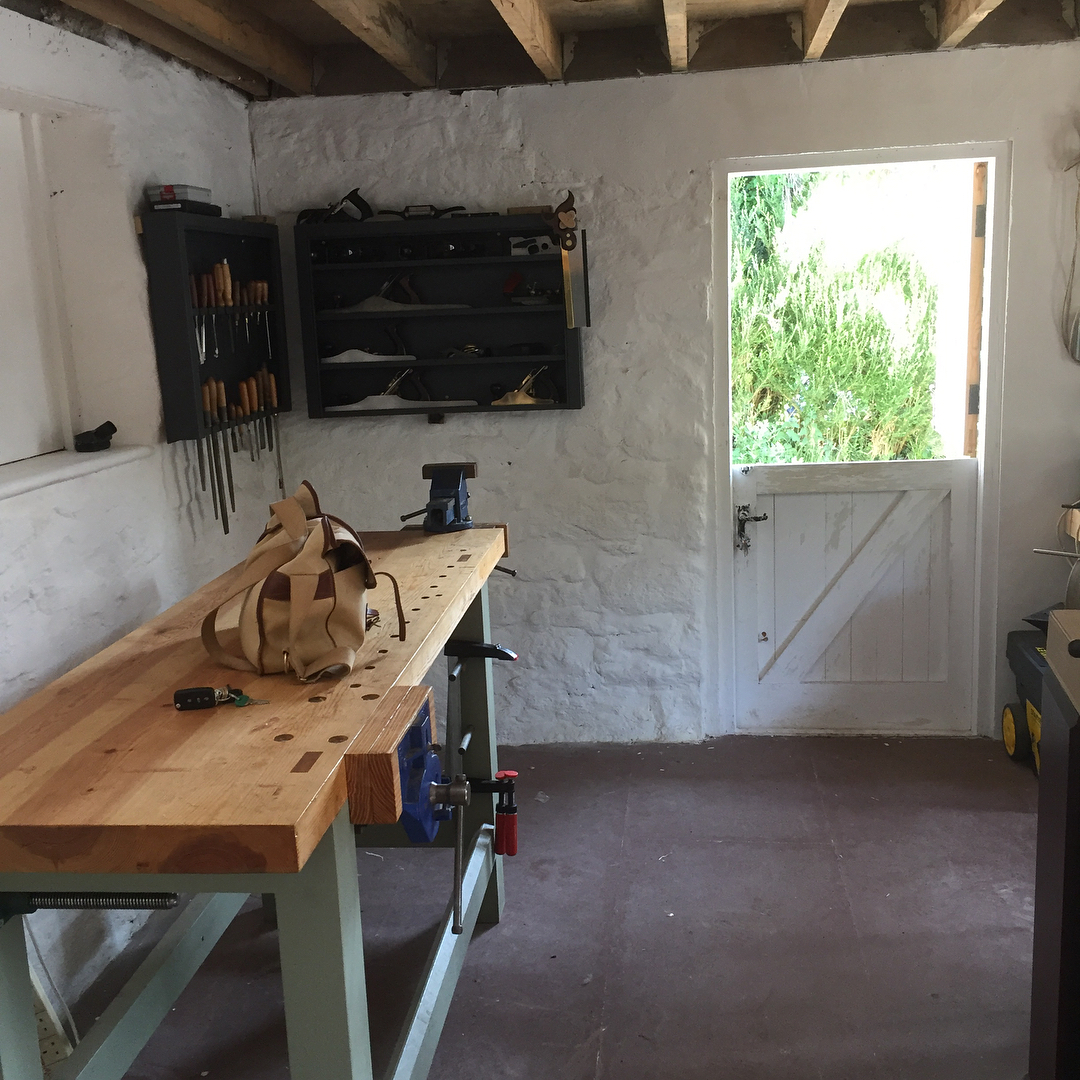
Chris maintains normal working hours – typically 8 a.m. to 4 p.m. And lately he’s been thinking more about teaching. He’ll be back in the states next May to teach another chairmaking course. And Hugh has suggested that Chris teach some classes at Phoenix.
His first chairmaking course at Lost Art Press was also the first class he’s ever taught – and he was nervous. He thought he might hate it, or not excel, or even, be good at it.
“I think the consensus was that everybody had a really good time and it went well so that’s encouraging,” he says. “I’ve had some constructive criticism from students, and they’re right about what they said.”
And here, much like an axe splitting through wood, it’s clear Chris has chosen his own path. John Brown has influenced Chris’s life immeasurably, but Chris is not John Brown.
“John would come out with Zen-like phases, he was very philosophical,” Chris says. “And he used to say to me, ‘think round.’ When you’ve got this thing in front of you and you’re constantly turning it while you’re shaping it, it’s almost like a dance. You turn it, plane, turn it, plane, and you’re thinking round. And I know everyone [in the chairmaking class] thought it was hilarious, but it means something. You get that into your head as you’re doing it, and it does work. I think that’s always stuck with me. I’m not trying, pretending, to be John Brown. I could never do it and I don’t want to do it. But that is one of those things that has always stuck with me. Until coming here, I never knew I would say that. Obviously, it’s tickled a lot of people.”
Whereas John Brown often dealt with people awkwardly, Chris says, Chris enjoys being around people. He appreciates conversation (with people he likes) and loud laughter. He’s opinionated but compassionate. Professionally, he exudes calmness, encouraging his students to “be in the zone.” He uses phrases such as “be at one with the plane.” He regularly told students that it’s OK if their chair doesn’t look like his chair – that that’s good, even. And if they go home and make another chair using different methods? Fine.
“Put your own take on it,” he regularly told the class. “The form will still look fundamentally the same.”
An example: Chris sands away his tool marks, preferring a smooth surface. But he recognizes that many makers prefer to leave tool marks, including chairmaker Peter Galbert.
Whereas many folks find a comfortable spot on that horizontal axis, Chris recognizes the importance of growth, of riding that curve, both as a maker and a human being.
“I think I’m always kind of open to new things, and I kind of run with it then,” he says. “And you meet interesting people, like I met Hugh. He’s just really eccentric, very similar to John but in a different way. I seem to be drawn to this type of person. I’m not consciously doing it. I do pride myself in having friends who are quite poor to friends who are quite rich. I don’t care who you are, what color you are, gay, bloody whatever. If I like you, I like you.”
That said, he doesn’t force friendships. “You can’t consciously do that,” he says. “But I do try and see the best in people if I can. Or, I’m trying to see that more.”
Chris recently failed a mindfulness course.
Actually, “fail” is the wrong word. Because despite what he calls the “macho-made environment” sometimes prevalent in his circles, he recognized the need to be more present in the moment. So, he signed up for a class.
“I’m sitting there with my teacher – she was lovely, we got along really great – and she taps this bell and then you’ve got to get in the zone. And I’m sitting there and I’m thinking, ‘Well, right after this I’m going to make a set of sticks and I’m going to glue this or that …’ and that’s no good. I couldn’t switch it off. And we tried for weeks. In the end, I just said, ‘I can’t do it. I can’t switch off.’ And she said, ‘Chris, it’s fine.’”
But he did take something away from it.
“I try to live more in the now,” he says. “That’s one thing I have learned. It’s hard. You can’t change the past. It’s happened. You can’t go back. And you can’t try to think too far ahead. Try to think smaller, you know? It’s hard.”
Perhaps, but Chris also manages to immerse himself in the moment better than most – it happens any time he hears his own music while thinking round.
“It sounds romantic but I honestly mean this,” he says. “Whenever it’s cold out, in the winter, and you drive to work in your car, it’s always lovely walking into the workshop, which is warm. We used to use a lot of pine and I can smell it now. Even when I smell this certain pine at home, it’s really nostalgic. It’s quite bizarre. And I always felt a kind of comfort that you were in a warm place and you were in a place that you enjoyed being. And I still feel like that sometimes. If I’ve done a particularly nice job with what I’m doing I feel – ah, I’m being paid to do this – which is really special, you know? But I’d be lying if, probably at least once a week I think, ‘What am I doing? I need to get a proper job.’ But even if I won the lottery or inherited millions I wouldn’t change anything. I’d just do what I wanted to do and not worry about finding customers.”
Of course, it’s very likely that customers would find him.
— Kara Gebhart Uhl



